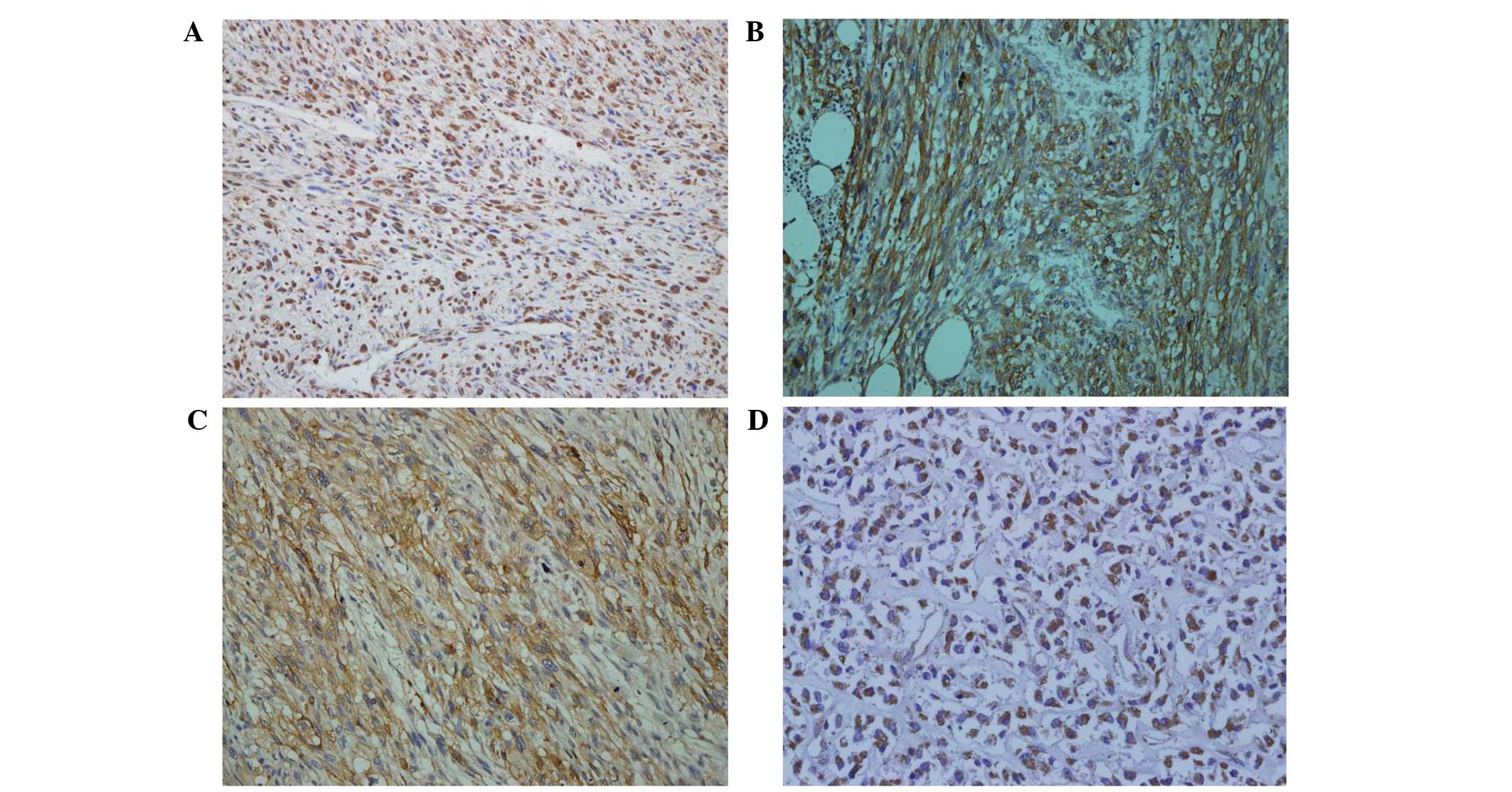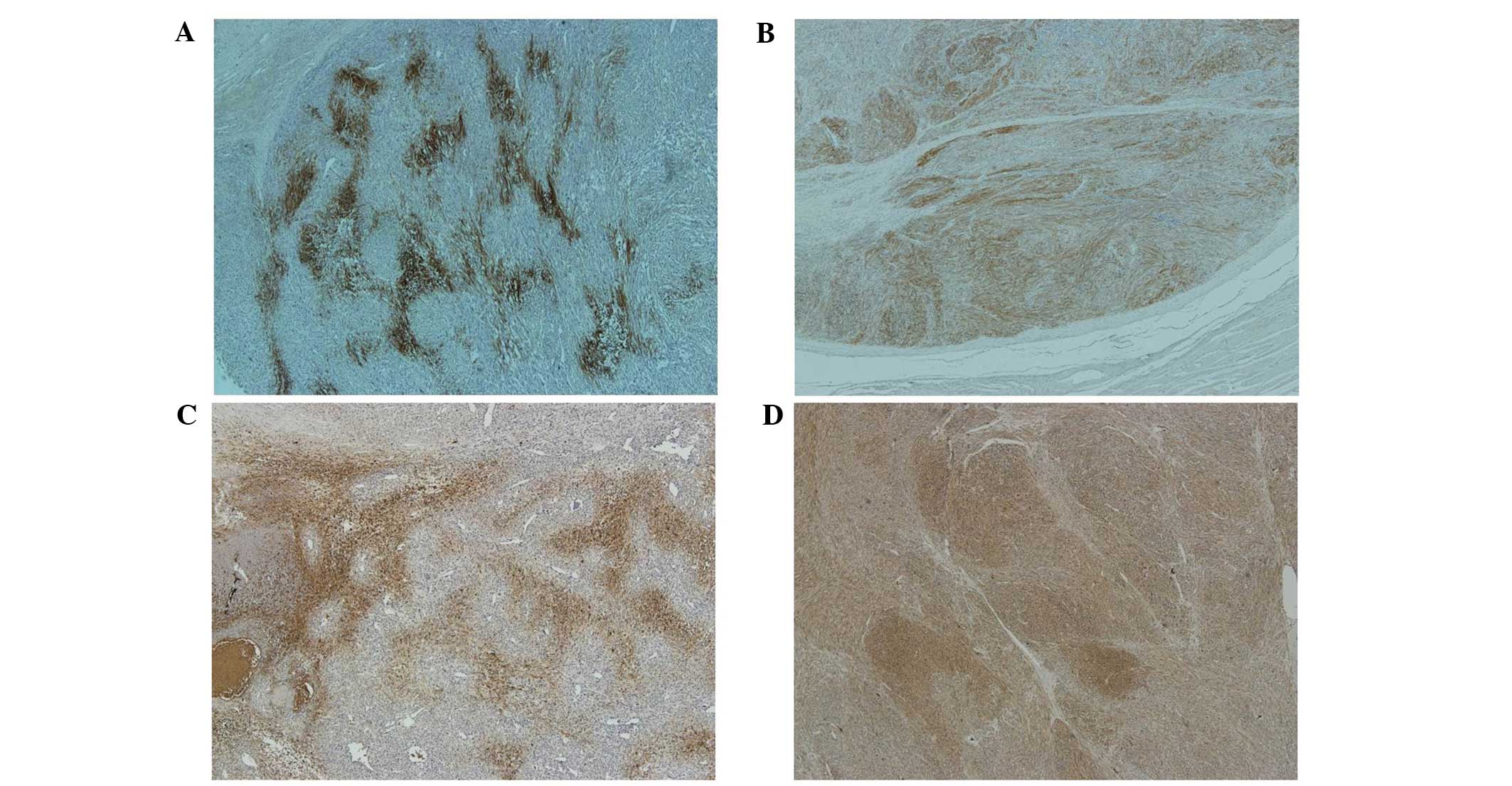|
1
|
Brizel DM, Scully SP, Harrelson JM, et al:
Tumor oxygenation predicts for the likelihood of distant metastases
in human soft tissue sarcoma. Cancer Res. 56:941–943.
1996.PubMed/NCBI
|
|
2
|
Harris AL: Hypoxia - a key regulatory
factor in tumour growth. Nat Rev Cancer. 2:38–47. 2002. View Article : Google Scholar : PubMed/NCBI
|
|
3
|
Subarsky P and Hill RP: The hypoxic tumour
microenvironment and metastatic progression. Clin Exp Metastasis.
20:237–250. 2003. View Article : Google Scholar : PubMed/NCBI
|
|
4
|
Unruh A, Ressel A, Mohamed HG, et al: The
hypoxia-inducible factor-1 alpha is a negative factor for tumor
therapy. Oncogene. 22:3213–3220. 2003. View Article : Google Scholar : PubMed/NCBI
|
|
5
|
Jubb AM, Buffa FM and Harris AL:
Assessment of tumour hypoxia for prediction of response to therapy
and cancer prognosis. J Cell Mol Med. 14:18–29. 2010. View Article : Google Scholar
|
|
6
|
Nordsmark M, Alsner J, Keller J, et al:
Hypoxia in human soft tissue sarcomas: adverse impact on survival
and no association with p53 mutations. Br J Cancer. 84:1070–1075.
2001. View Article : Google Scholar : PubMed/NCBI
|
|
7
|
Quintero M, Mackenzie N and Brennan PA:
Hypoxia-inducible factor 1 (HIF-1) in cancer. Eur J Surg Oncol.
30:465–468. 2004. View Article : Google Scholar : PubMed/NCBI
|
|
8
|
Lee WY, Huang SC, Hsu KF, Tzeng CC and
Shen WL: Roles for hypoxia-regulated genes during cervical
carcinogenesis: somatic evolution during the
hypoxia-glycolysis-acidosis sequence. Gynecol Oncol. 108:377–384.
2008. View Article : Google Scholar
|
|
9
|
Enatsu S, Iwasaki A, Shirakusa T, et al:
Expression of hypoxia-inducible factor-1 alpha and its prognostic
significance in small-sized adenocarcinomas of the lung. Eur J
Cardiothorac Surg. 29:891–895. 2006. View Article : Google Scholar : PubMed/NCBI
|
|
10
|
Korkeila E, Talvinen K, Jaakkola PM, et
al: Expression of carbonic anhydrase IX suggests poor outcome in
rectal cancer. Br J Cancer. 100:874–880. 2009. View Article : Google Scholar : PubMed/NCBI
|
|
11
|
Kirkpatrick JP, Rabbani ZN, Bentley RC, et
al: Elevated Caix Expression Is Associated With An Increased Risk
Of Distant Failure In Early-Stage Cervical Cancer. Biomark
Insights. 1:45–55. 2008.
|
|
12
|
Robertson N, Potter C and Harris AL: Role
of carbonic anhydrase IX in human tumor cell growth, survival, and
invasion. Cancer Res. 64:6160–6165. 2004. View Article : Google Scholar : PubMed/NCBI
|
|
13
|
Seeber LM, Horrée N, van der Groep P, van
der Wall E, Verheijen RH and van Diest PJ: Necrosis related
HIF-1alpha expression predicts prognosis in patients with
endometrioid endometrial carcinoma. BMC Cancer. 19:3072010.
View Article : Google Scholar
|
|
14
|
Kim K, Park WY, Kim JY, et al: Prognostic
Relevance Of The Expression Of Ca Ix, Glut1, And Vegf In Ovarian
Epithelial Cancers. Korean J Pathol. 46:532–540. 2012. View Article : Google Scholar
|
|
15
|
Poon E, Harris AL and Ashcroft M:
Targeting the hypoxia-inducible factor (HIF) pathway in cancer.
Expert Rev Mol Med. 27:e262009. View Article : Google Scholar
|
|
16
|
Younes M, Lechago LV, Somoano JR, Mosharaf
M and Lechago J: Wide expression of the human erythrocyte glucose
transporter Glut1 in human cancers. Cancer Res. 56:1164–1167.
1996.PubMed/NCBI
|
|
17
|
Younes M, Juarez D, Lechago LV and Lerner
SP: Glut 1 expression in transitional cell carcinoma of the urinary
bladder is associated with poor patient survival. Anticancer Res.
21:575–578. 2001.PubMed/NCBI
|
|
18
|
Kawamura T, Kusakabe T, Sugino T, et al:
Expression of glucose transporter-1 in human gastric carcinoma:
association with tumor aggressiveness, metastasis, and patient
survival. Cancer. 92:634–641. 2001. View Article : Google Scholar : PubMed/NCBI
|
|
19
|
Duncan TJ, Al-Attar A, Rolland P, et al:
Vascular endothelial growth factor expression in ovarian cancer: a
model for targeted use of novel therapies? Clin Cancer Res.
14:3030–3035. 2008. View Article : Google Scholar : PubMed/NCBI
|
|
20
|
Ozbudak IH, Karaveli S, Simsek T, Erdogan
G and Pestereli E: Neoangiogenesis and expression of
hypoxia-inducible factor 1alpha, vascular endothelial growth
factor, and glucose transporter-1 in endometrioid type endometrium
adenocarcinomas. Gynecol Oncol. 108:603–608. 2008. View Article : Google Scholar : PubMed/NCBI
|
|
21
|
Fletcher CDM, Bridge JA, Hogendoorn PCW
and Mertens F: WHO classification of tumors of soft tissue and
bone. 4th edition. IARC; Lyon: 2013
|
|
22
|
Zagars GK, Ballo MT, Pisters PW, Pollock
RE, Patel SR and Benjamin RS: Prognostic factors for
disease-specific survival after first relapse of soft-tissue
sarcoma: analysis of 402 patients with disease relapse after
initial conservative surgery and radiotherapy. Int J Radiat Oncol
Biol Phys. 57:739–747. 2003. View Article : Google Scholar : PubMed/NCBI
|
|
23
|
Ottaiano A, De Chiara A, Fazioli F, et al:
Biological prognostic factors in adult soft tissue sarcomas.
Anticancer Res. 25:4519–4526. 2005.PubMed/NCBI
|
|
24
|
Måseide K, Kandel RA, Bell RS, et al:
Carbonic anhydrase IX as a marker for poor prognosis in soft tissue
sarcoma. Clin Cancer Res. 10:4464–4471. 2004. View Article : Google Scholar : PubMed/NCBI
|
|
25
|
Hung JJ, Yang MH, Hsu HS, Hsu WH, Liu JS
and Wu KJ: Prognostic significance of hypoxia-inducible
factor-1alpha, TWIST1 and Snail expression in resectable non-small
cell lung cancer. Thorax. 64:1082–1089. 2009. View Article : Google Scholar : PubMed/NCBI
|
|
26
|
Yang MH, Wu MZ, Chiou SH, et al: Direct
regulation of TWIST by HIF-1alpha promotes metastasis. Nat Cell
Biol. 10:295–305. 2008. View
Article : Google Scholar : PubMed/NCBI
|
|
27
|
Seeber LM, Horrée N, Vooijs MA, et al: The
role of hypoxia inducible factor-1alpha in gynecological cancer.
Crit Rev Oncol Hematol. 78:173–184. 2011. View Article : Google Scholar
|
|
28
|
Chen CL, Chu JS, Su WC, Huang SC and Lee
WY: Hypoxia and metabolic phenotypes during breast carcinogenesis:
expression of HIF-1alpha, GLUT1, and CAIX. Virchows Arch.
457:53–61. 2010. View Article : Google Scholar : PubMed/NCBI
|
|
29
|
Vleugel MM, Greijer AE, Shvarts A, et al:
Differential prognostic impact of hypoxia induced and diffuse
HIF-1alpha expression in invasive breast cancer. J Clin Pathol.
58:172–177. 2005. View Article : Google Scholar : PubMed/NCBI
|
|
30
|
Cantuaria G, Fagotti A, Ferrandina G, et
al: GLUT1 expression in ovarian carcinoma: association with
survival and response to chemotherapy. Cancer. 92:1144–1150. 2001.
View Article : Google Scholar : PubMed/NCBI
|
|
31
|
Zheng G, Zhou M, Ou X, et al:
Identification of carbonic anhydrase 9 as a contributor to
pingyangmycin-induced drug resistance in human tongue cancer cells.
FEBS J. 277:4506–4518. 2010. View Article : Google Scholar : PubMed/NCBI
|












